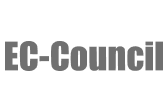Cybersecurity Audit
A comprehensive evaluation of your organization’s security posture to identify vulnerabilities and ensure compliance.

What is a Cybersecurity Audit?
A Security Audit is a comprehensive evaluation of your organization’s security systems, policies, and practices. Unlike basic vulnerability assessments, which focus on specific threats, a Security Audit examines your entire infrastructure to identify risks, ensure compliance, and assess overall security effectiveness.
Our experts use industry-standard frameworks and best practices to evaluate your security posture, identify weaknesses, and provide actionable recommendations to enhance your defences and mitigate potential threats.
What’s included in a Cybersecurity Audit?
Each Security Audit is tailored to your organization and follows industry best practices and recognized standards such as ISO 27001, NIST, SOC 2, and GDPR. It may include:
Evaluation of security policies, procedures, and practices
A thorough assessment of your organisation’s security policies, procedures, and practices to identify weaknesses and ensure alignment with industry standards.
Risk assessment and identification of vulnerabilities
A detailed analysis to identify potential risks and vulnerabilities in the systems, helping prioritise security improvements.
Assessment of access controls and data protection
An evaluation of access controls, encryption methods, and data protection measures to ensure the security and confidentiality of sensitive information.
Regulatory and standards compliance review
An assessment of the organisation’s adherence to applicable regulations and industry standards to ensure compliance and mitigate legal risks.
Security improvement and risk mitigation recommendations
Actionable suggestions to enhance your organisation’s security measures and address identified vulnerabilities to reduce potential risks.
Key Results
Security Risk Identification
Uncover potential vulnerabilities and risks across the organisation’s infrastructure.
Compliance Assurance
Ensure the security practices align with relevant regulations and industry standards.
Security Posture Strengthening
Enhance security policies, procedures, and technologies to prevent future threats.
Actionable Recommendations
Receive a detailed report with prioritised suggestions for immediate improvements.

Who Needs a Cybersecurity Audit?
- Financial institutions, insurers, and payment providers
- Organizations handling sensitive data or critical infrastructure
- Tech companies seeking to enhance security and compliance
- Governments and public sector entities
- Enterprises aiming to meet regulatory requirements (ISO 27001, GDPR, SOC 2, PCI DSS)
- Businesses looking to identify vulnerabilities and strengthen their overall security posture
Our Partners & Vendors







Concerned about potential security gaps in your organization?
Identify vulnerabilities in your systems and ensure compliance — and learn how to strengthen your defences .
FAQ
What is a Security Audit?
What is a Security Audit?
A Security Audit is a comprehensive evaluation conducted by cybersecurity experts to assess an organization’s security policies, procedures, and infrastructure. The goal is to identify vulnerabilities, ensure compliance with industry standards, and provide actionable recommendations to strengthen overall security defenses. This is a thorough, systematic approach aimed at proactively identifying weaknesses.
How is a Security Audit different from regular vulnerability scanning?
How is a Security Audit different from regular vulnerability scanning?
While a Security Audit and vulnerability scanning may seem similar, their goals are different:
- Vulnerability scanning focuses on identifying specific weaknesses in systems or applications, often using automated tools. It’s more technical and targeted.
- Security Auditing takes a broader, holistic approach, evaluating policies, procedures, and overall security posture. It involves assessing compliance, risk management strategies, and internal controls to ensure long-term security and resilience.
What techniques does a Security Audit use?
What techniques does a Security Audit use?
A Security Audit involves a variety of methods to assess and improve an organisation’s security posture. The most common techniques include:
- Policy and procedure review — evaluating security policies and procedures to ensure they align with industry standards..
- Risk assessment — identifying potential risks and vulnerabilities across systems and processes.
- Compliance checks — assessing adherence to relevant regulations and security standards (e.g., ISO 27001, GDPR).
- Infrastructure testing — reviewing networks, systems, and applications for weaknesses and security gaps.
- Access control review — analyzing user access permissions and authentication mechanisms to ensure proper control.
Who needs Security Audit services?
Who needs Security Audit services?
Red Team Assessments are ordered by organizations that want to truly test their security posture, including:
- Financial institutions and payment providers.
- Healthcare organizations and companies handling sensitive data.
- Government entities and public sector organisations.
- Enterprises pursuing compliance with regulatory standards (e.g., ISO 27001, GDPR).
- Any business looking to proactively identify vulnerabilities and enhance its overall security posture.
How often should a Security Audit be conducted?
How often should a Security Audit be conducted?
It’s recommended to conduct a Security Audit at least annually or whenever there are significant changes to your IT infrastructure or business operations. Additionally, audits should be performed after any major security incidents or compliance updates to ensure that defences are up to date.

